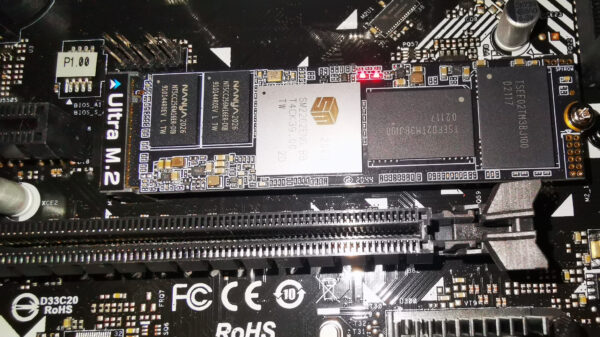Review on GOODRAM 2.5 СL100 120GB SATA3 TLC SSD (SSDPR-CL100-120-G2)
2 min readGreetings to you, readers. I bring to your attention a small review on a solid-state drive GOODRAM 2.5″ СL100 120 GB SATA3 TLC (SSDPR-CL100-120-G2).
This drive is manufactured and sold by the Goodram trademark, production is located in Poland. This is the second generation of this model, and more recently, at the end of March 2020, messages appeared on the Internet about the next, already third, generation.
The packaging in many languages provides completely useless information.
As you can find out by searching the Internet, a drive is built based on the Marvell 88NV1120 controller and 3D TLC type memory chips. Unfortunately, the manufacturer of microcircuits in this device could not be found. Therefore, I immediately turn to measuring speed using well-known software.
It is worth noting that the drive does not shine with speed. Read speed with sequential access of 470 megabytes per second – this is almost 90 megabytes per second less than the best representatives of the class of devices with SATAIII interface. The write speed of 390 megabytes per second is also about the same difference less than that of the best representatives. Multithreaded random write tests show that it is no coincidence that the 1120 is the cheapest and the weakest. In general, only a couple of WD Green / Sandisk Ultra devices have worse results.
In another test tool, the results are roughly similar. The integrated performance rating is about half that of the “hospital average”.
However, the most interesting test is a test to record the entire volume of the drive in order to determine the stability of speed characteristics.
And here it is obvious that the drive is conditionally “fast” only when recording the first third of the remaining free space, after which it will go into the “compaction” mode of previously recorded three-bit memory cells (filled by one third). These are the SLC caching algorithms – write down the entire free capacity, each cell 1/3 of its capacity, and then begin to compress the data to free up space. If at the same time it is required to continue recording, the speed drops to the values that hard drives could boast of in the year 2005-2006. That is, to completely indecent values in 2020.
In general, the extreme unpretentiousness of this drive follows from this – to use it as a system disk in devices that do not require any noticeable recording volumes: office machines, grandmother skype phones, etc. But the manufacturer promises a three-year warranty, which is very decent.
The article is written on the basis of materials of this site.










